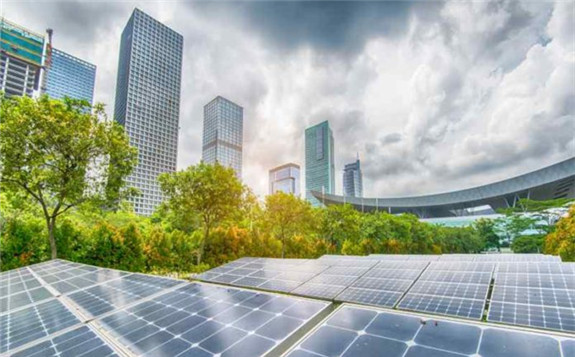The US solar energy market has recorded its first price increase quarter-over-quarter and year-over-year across every market segment in seven years, according to a new report released by Wood Mackenzie and the US Solar Energy Industries Association (SEIA).

The utility-scale sector recorded the highest increase of 6% year-over-year since 2014, according to the study.
The increase is due to supply chain constraints, despite the market adding up 5.7GW of solar energy capacity in the second quarter of 2021.
This means solar accounted for 56% of all new electricity capacity additions in the US in the first half of 2022, according to the report. The US managed to surpass 3 million solar installations during the second quarter of 2021 owing to massive growth in the residential segment.
The supply chain constraints were worsened by COVID-19 impacts on the global economy and on the China-US trade tensions.
Although many project developers have managed to gather equipment and technologies for 2021 projects, price increases are expected in 2022 as well.
Other findings of the report include:
Community solar was up 16% over Q2 2020 with 177MWdc installed, and commercial solar was up 31% over the same quarter last year with 354MWdc installed.
Utility-scale solar set another record for second-quarter installations at 4.2GWdc. Texas, Arizona, and Florida accounted for nearly 3GW of the quarterly total.
A total of 9.3GWdc of new utility-scale solar power purchase agreements were signed in Q2 2021, bringing the utility-scale contracted pipeline to nearly 85GWdc.
Abigail Ross Hopper, the CEO of SEIA, said: “This is a critical moment for our climate future but price increases, supply chain disruptions and a series of trade risks are threatening our ability to decarbonize the electric grid.
“If we want to incentivize domestic manufacturing and drive enough solar deployment to tackle the climate crisis, we must see action from our federal leaders.”
In addition to recent enforcement actions on Xinjiang metallurgical grade silicon, two new tariff petitions have been filed.
Taken together, these actions could significantly exacerbate supply chain constraints and increase solar system prices. However, the sector is expected to continue to set installation records through 2024 when the country’s solar investment Tax Credit facility expires. Wood Mackenzie predicts industry growth to be flat in 2025 and 2026.
Up to 29GW of new solar energy capacity is anticipated to be added per annum through 2026. However, the additions will not be enough to meet President Joe Biden’s 2035 renewable energy targets which require more than 80GW of solar capacity to be connected per annum through 2035.
Michelle Davis, principal analyst at Wood Mackenzie, added: “The solar industry continues to demonstrate strong quarterly growth, and demand is high across every segment.
“But the industry is now bumping up against multiple challenges, from elevated equipment prices to complex interconnection processes. Addressing these challenges will be critical to expanding the industry’s growth and meeting clean energy targets.”